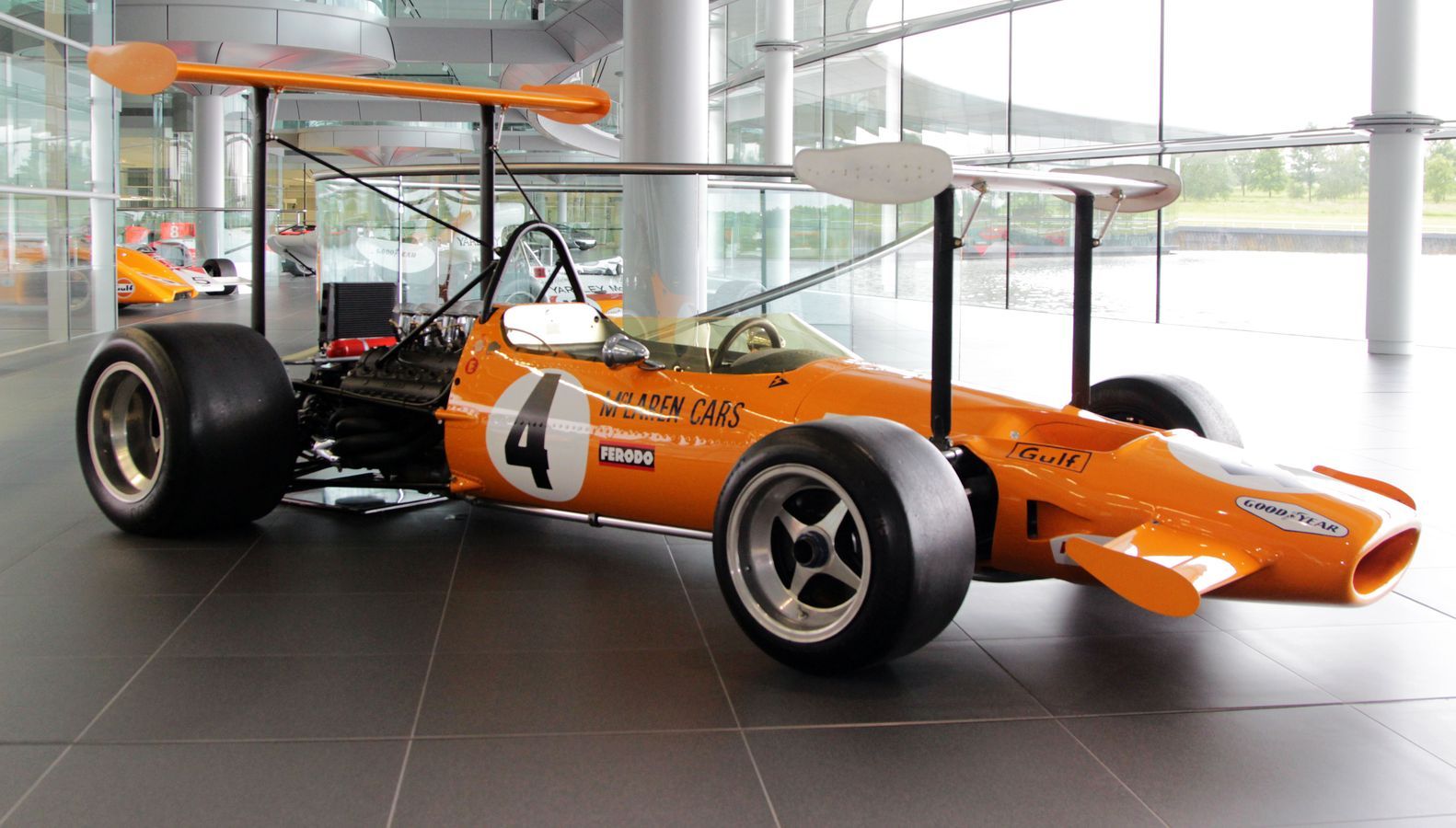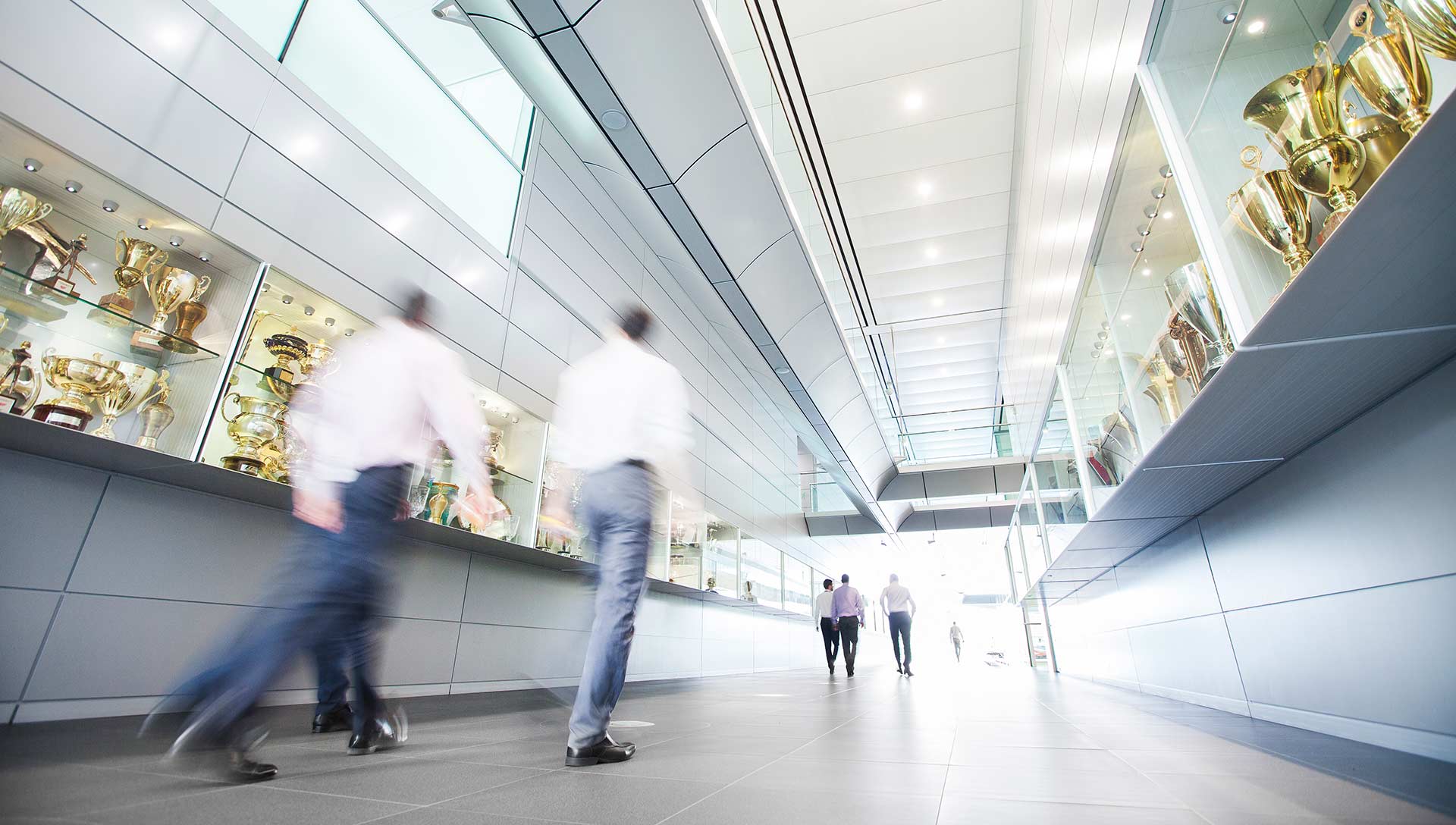
McLAREN heritage fleet: on the road
To celebrate the beginning of a new McLaren-Honda era, test and reserve driver Stoffel Vandoorne wound back the clock and took Ayrton Senna’s championship-winning McLaren-Honda MP4/4 and MP4/6 for a spin around Silverstone. Firing up the cars and sending them out of the garage looks like a relatively simple operation – but looks can be deceiving.
McLaren’s collection of classic cars spans many decades and several ages of racing. Comprising everything from championship-winning legends to priceless, one-off test mules, the heritage collection will be demonstrated in showrooms, at public events and of course, on the Boulevard at the MTC. The fleet is totally authentic and the all-consuming passion of the people who curate it is that every car should be capable of running at racing speeds. Quite how large a challenge that can be is often under-estimated. A heritage car leaving the garage has to be prepared to the same exacting standards afforded a current model, while lacking the huge logistics and manufacturing operation that supports the latter.
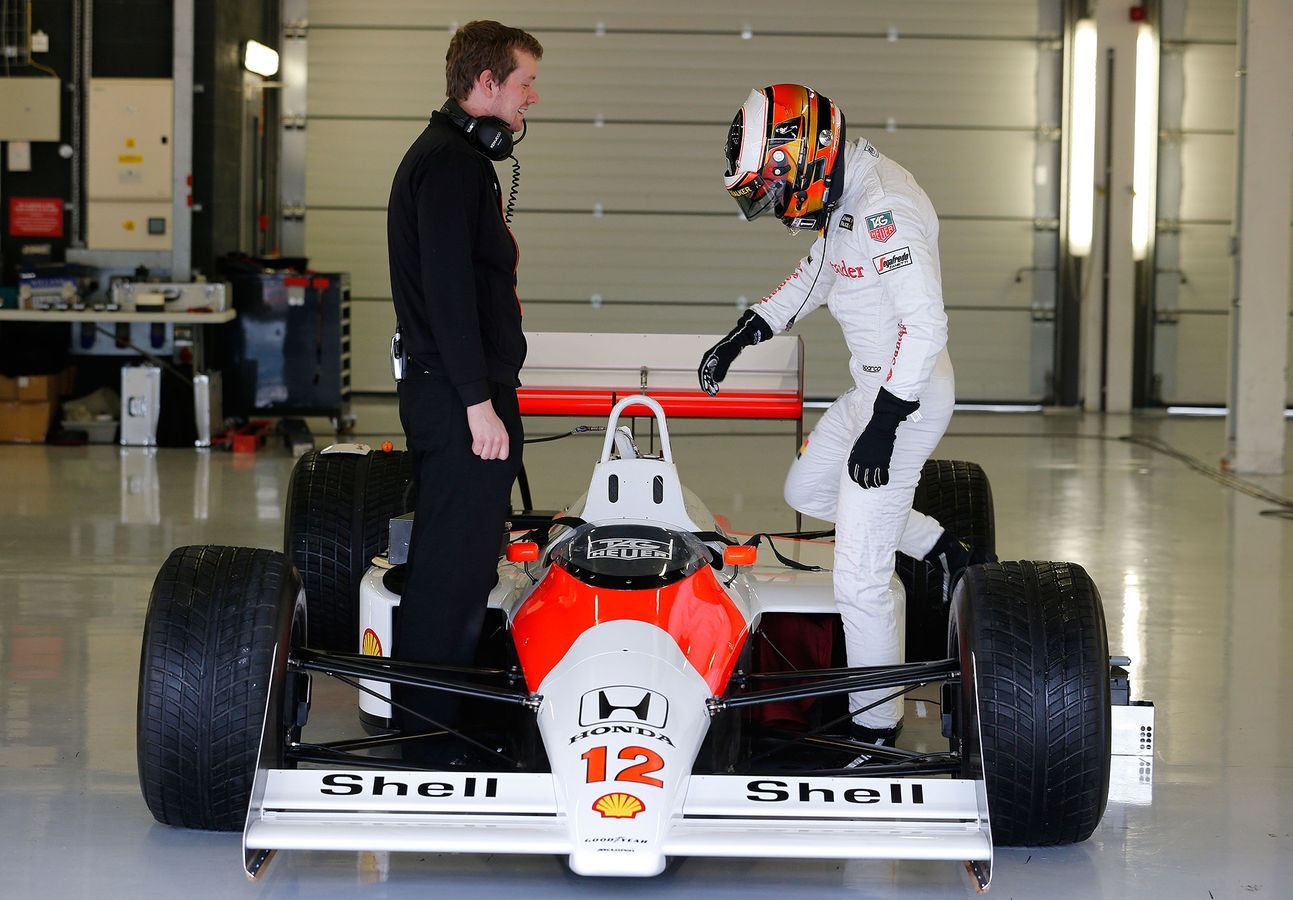
There’s a huge amount of pride felt by everyone at McLaren when these blasts from the past are fired up – but the complexities of maintaining a heritage fleet stretching back to the 1960s is perhaps lost in the roar from the tailpipes. Support operations manager Emmanuel (Manu) Esnault gave us the low-down on what goes on behind the scenes. It’s fascinating stuff.
Manu, how many people does it take to look after the heritage fleet – and what do you have in your care?
We have approximately 200 cars in the heritage fleet, including some non-F1 models such as, Can-Am cars, Indy cars the McLaren F1 GTRs from the mid-1990s. There’s a team of between five and seven people to look after them but we might also call on the skills of people from around the company with prior knowledge of a particular car. It helps a lot to have that knowledge within the company – there is usually someone around who can help out with a problem.
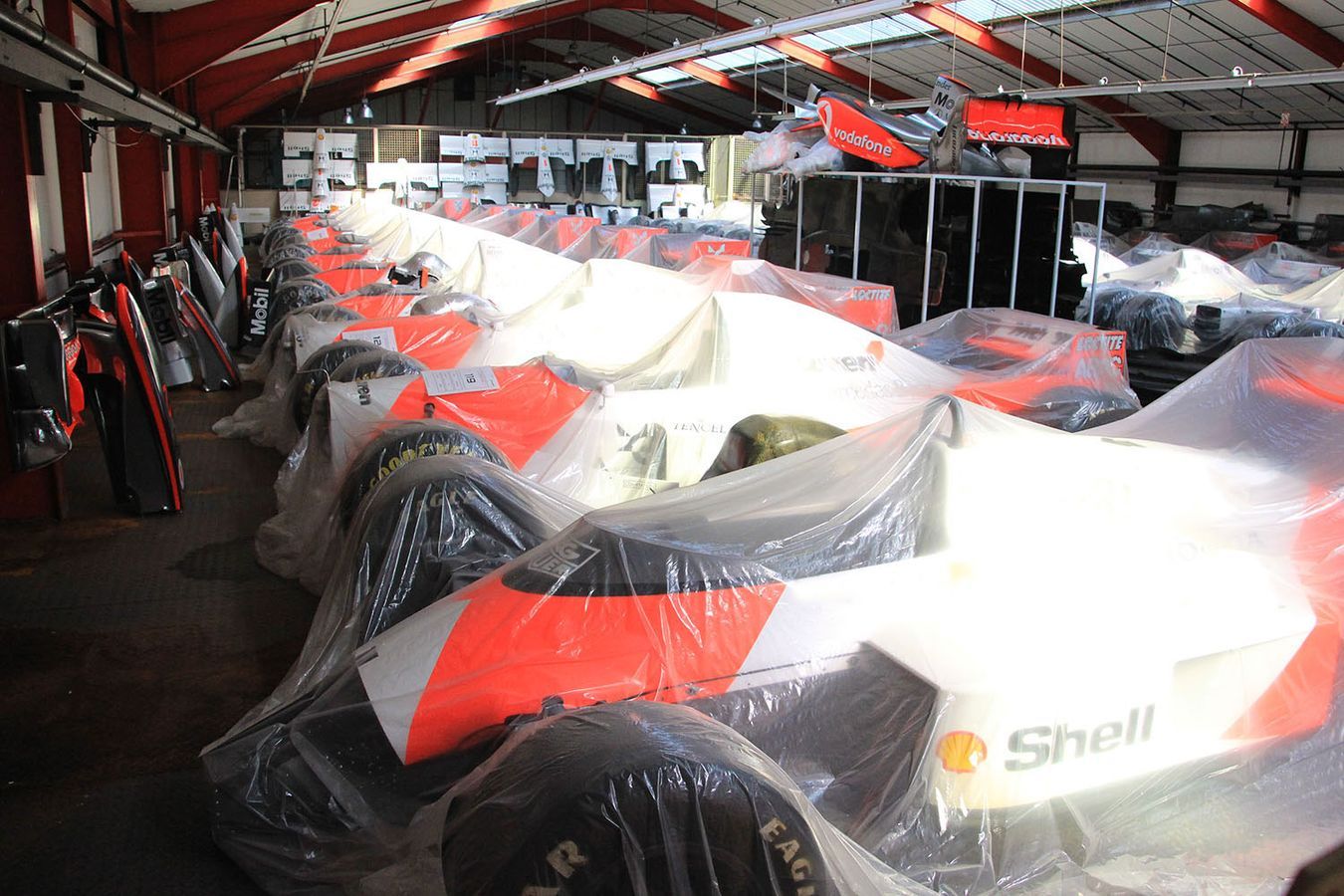
None of these cars were designed for longevity: how big is the challenge of keeping a car in good running order for decades, when it was built to race for only a few months?
Sometimes it is very difficult to run a car – but it is not necessarily the oldest cars that require the most attention. It starts to become particularly difficult with cars from the early 1990s. Our MP4/8 from 1993, for example, with its active suspension and complex electronics.
Preparing a car from that period for a proper run is… tricky. For example, we have to use the right computers with hardware that’s compatible with the embedded electronics. Before we can work on that car we first need to locate a computer with a working copy of Windows 3.1! In comparison to that, the Honda cars of the late 1980s/early 1990s are quite easy. They ‘just’ have an electronic engine control unit; it’s not an all-in-one box managing lots of other things.
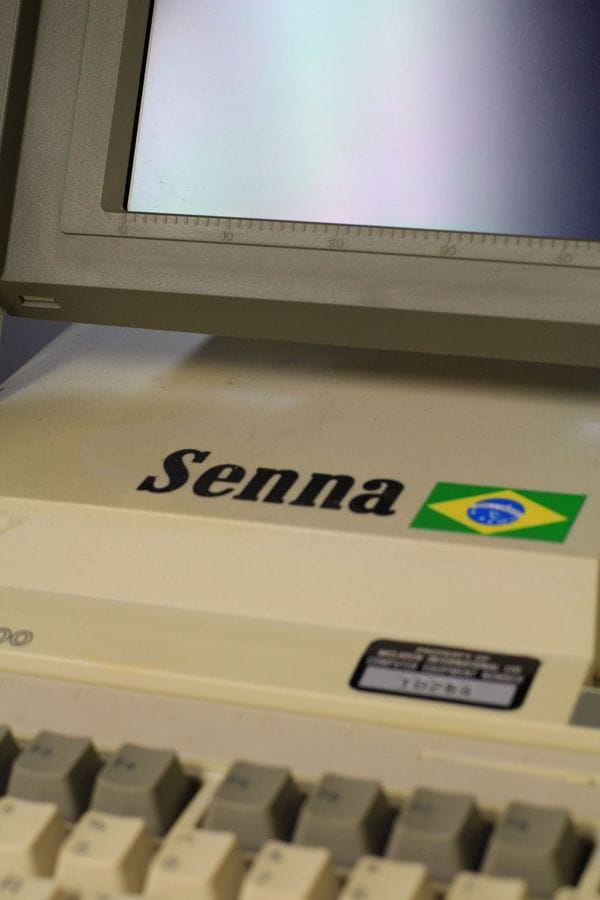
How far do you take authenticity? Is there a store room at the McLaren Technology Centre filled with vintage laptops and other garage paraphernalia?
Yes! Each time a car is prepared as a show car, we also prepare a complete kit to run it. That means starter motor, electrical cables, the laptops, the software… everything. That alone is a big challenge because F1 is a fast moving business and the cars are always evolving. For those of us involved with the heritage side of the company, understanding the evolution of the car during a season – hardware, software and even mechanical upgrades – is a challenge.
When you plan to show a particular model, how do you decide which specification to prepare that model to? Is it simply the specification in which the car finished the season?
In modern times McLaren build perhaps four chassis per season. Our plan for the end of each year is to take those four and prepare two complete cars in a ready-to-run state. Our policy is to prepare them to the highest pedigree possible, which typically will be to the specification from the races where they achieved the best results. This year that means we will have both MP4/29 cars in the Australian Grand Prix spec where both Kevin and Jenson finished on the podium.
Sometimes there has to be a bit of compromise – perhaps, for example, the floors were later modified and no longer exist in that Australian Grand Prix specification – but we do the absolute maximum to maintain authenticity. We don’t use ‘show car spec’ parts. We keep it real.
How much help do you need from the race team? Do they manufacture ‘new’ parts for old cars?
We try to anticipate the sort of things we’ll need and store a certain amount of spares when a model retires. Remanufacturing is very complex: expensive in both time and money. We try to avoid it wherever possible.
Are your team all very experienced personnel or does the heritage team also include younger members?
We have both. We’re lucky in this team to have some people who worked on these cars when they were racing. On the other hand, we try to use this department as a stepladder for young mechanics doing their apprenticeship. It gives them the opportunity to learn about racing cars – even though these cars are far different to the current ones. At the end of the day it’s a way to teach them about McLaren’s racing philosophy and the way we work. This also is part of the heritage of the company.
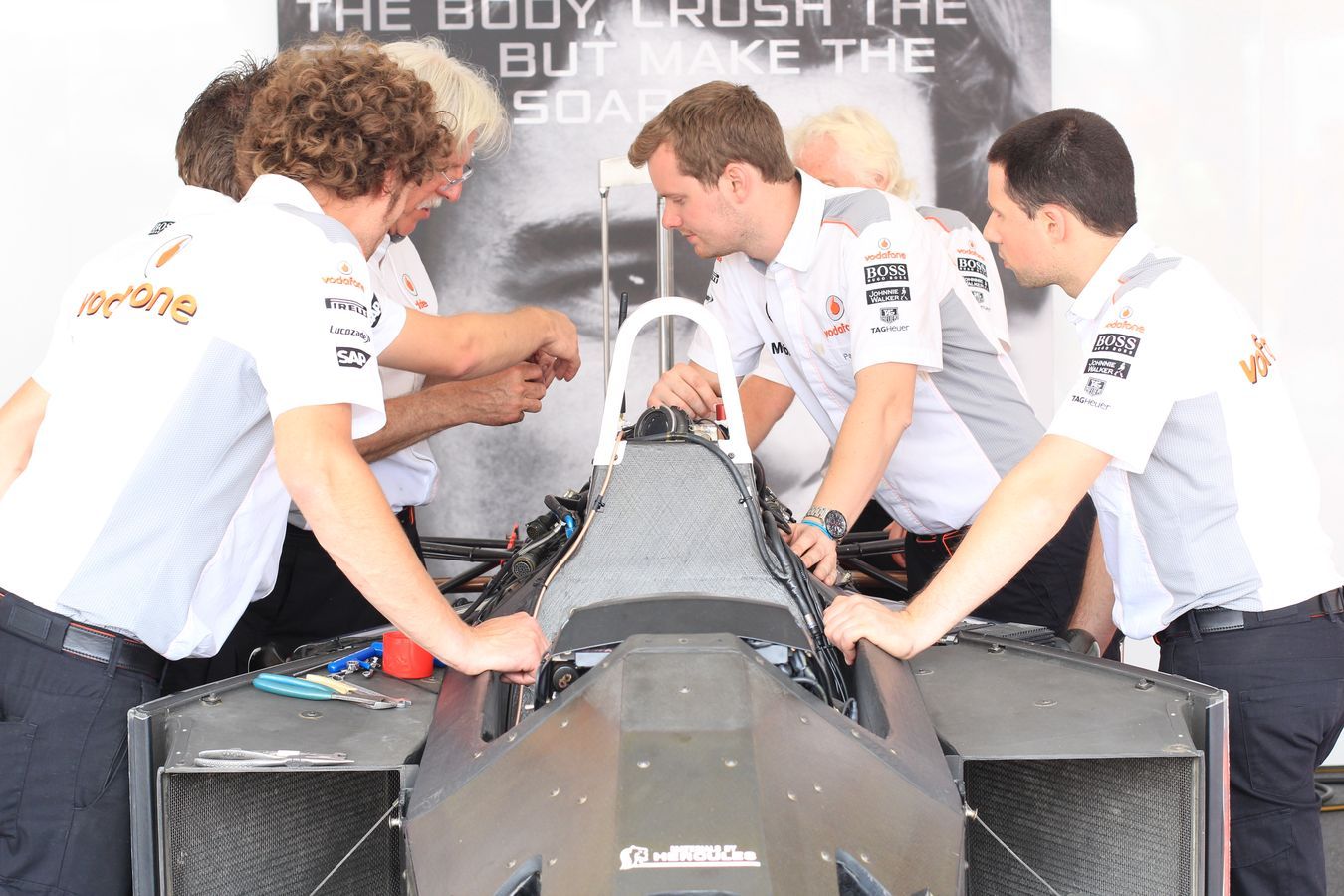
Do you try to rotate the cars that are displayed and driven – or are certain cars simply always in demand?
We’ve got certain cars that are iconic, and those ones are requested quite often: 1988’s MP4/4 of course; M23 – the first championship-winning car for McLaren; the 1995 F1 GTR Le Mans-winning car; MP4/13 – the first World Championship-winning car with a Mercedes engine; Lewis Hamilton’s MP4-23 from 2008… these cars all run quite often.
Are there more running examples of the most popular cars?
Until 2008 [when testing became subject to heavy restrictions] a far higher number of chassis were manufactured, so there are more cars available. If we take 1991’s MP4/6 as an example, we have ten chassis available. Not ten complete cars but ten chassis. That makes it a lot easier to prepare a really good one.
Inevitably, there is a risk attached to running a car. When you have multiple chassis available do you run ones of lesser provenance and protect the cars that made history?
Not at all. The running car will always be one of the most successful of the year. Because we are preparing the highest pedigree cars, and we’ve got such a limited number of engines, we tend to put those in the most famous cars.
How much help do you need from technical partners, past and present, to keep the fleet moving?
For fuels and lubricants we have a really good partnership with Exxon-Mobil. They are able to create fuels and lubricants that match the specification used on these heritage cars. Regarding tyres, unfortunately it’s not possible to do that. As soon as a tyre supplier ceases involvement in F1 it’s impossible for them to manufacture a new batch of old-specification tyres because the volumes are simply too low. The only way we can work is to go to standard brands selling tyres for hill-climbing, club racing etc.,
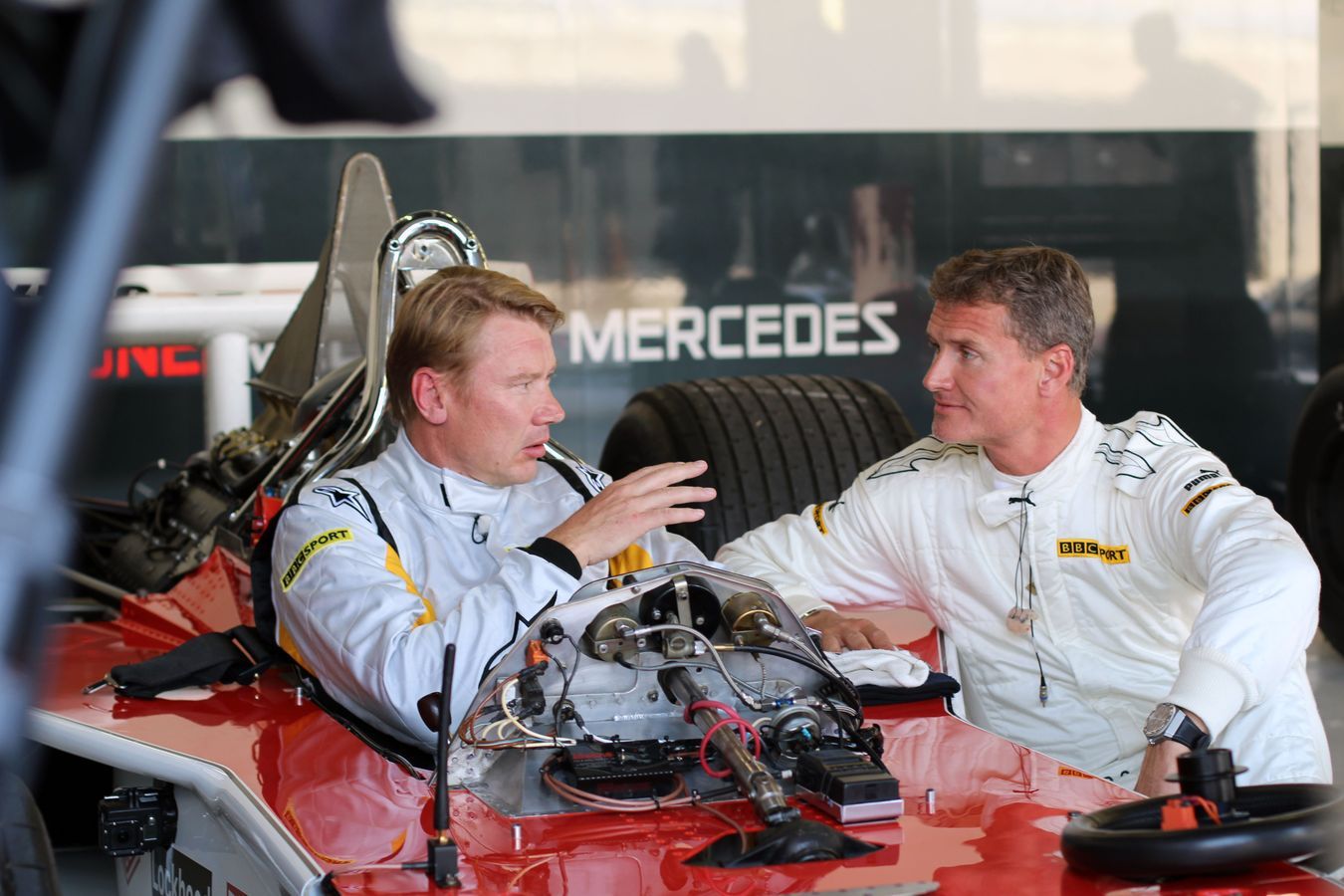
How much time is required to prepare a car for use – are they stripped and rebuilt like a current car would be?
The more often the car is running, the less time it takes. MP4/4 and M23 run so often you basically just push the button and do a minimum of preparation. For something that is rarely demonstrated, the process is much more complicated. If we are asked to run an MP4/17 from 2002 for example, that will be a lot of work. The first priority is to make sure the car is safe: we’ll X-ray all of the suspension components, check the fuel cell, the fuel lines. After safety, then it’s a case of getting the car prepared in the McLaren way, from all of the mechanical checks to ensuring it’s as spotlessly clean as it would have been when it was raced. To answer the question, a regularly-run car can be prepared in only 20 man-hours, whereas a rarity may require anything up to 500 man-hours – but it really depends on the car.
How do your team react when a request arrives to prep something uncommon?
Oh, it’s really enjoyable to work on a car that hasn’t been out in a while. It’s also very useful. Each time we have a request for one of these cars from marketing or a partner, it’s an excellent opportunity for us to make sure another part of our collection is in good condition and the proper running order. It’s an opportunity to carry out a complete health-check on that particular car.
It’s something we will try to do for the entire fleet anyway, even without there being events on the calendar. We rotate the cars in the collection and aim to fire-up every car at least once a year – but other commitments mean that isn’t always feasible, so having a specific request to prepare something unusual is very welcome.
Is everything in full running order or are some cars preserved purely for static display?
We certainly try to have everything in full running order but it’s not always the case that all of them are capable of running at the same time. One limiting factor is engines: we only have so many in the heritage fleet. I would say that at the moment perhaps 90 per cent of the fleet across all models is capable of doing a lap. We have a complete running car for every season from 1980 onwards but before that we have some holes in the collection.
Are there cars that you’d like to acquire?
There are certainly cars out there I would like – but perhaps the company has more pressing priorities! If I made a wish-list I’d like our winning IndyCar, I’d like the first McLaren Formula One car, the M2B. The most successful example of the F1 GTR would be nice, and also James Hunt’s car from 1976. It’s quite a shopping list!
It’s always a pleasure to walk down the Boulevard at the McLaren Technology Centre and see a different set of cars on display. Who chooses which models are rolled out for public gaze?
There’s input from lots of people. Often I’ll make a proposal to John Allert, the McLaren Group Brand Director, and also to Jonathan Neale, our CEO. Often it will be related to upcoming VIP visits or events because it’s good to have a talking point. For example, recently we had a Japanese Championship-winning F1 GTR on display because we had some Japanese guests.
The Boulevard is to promote the brand and the McLaren image. So we must use iconic cars – but of course, it is a bit frustrating that we can’t have them all on display! We have cars that are more exotic and more exclusive but it’s often difficult to justify showing them off. For example, we have a very rare 1983 Porsche 911 TAG-turbo. This car has less than 2,000 miles on the clock and is in absolutely mint condition. It was only ever used for engine-mapping the F1 TAG turbo engine. There is nothing else like it.
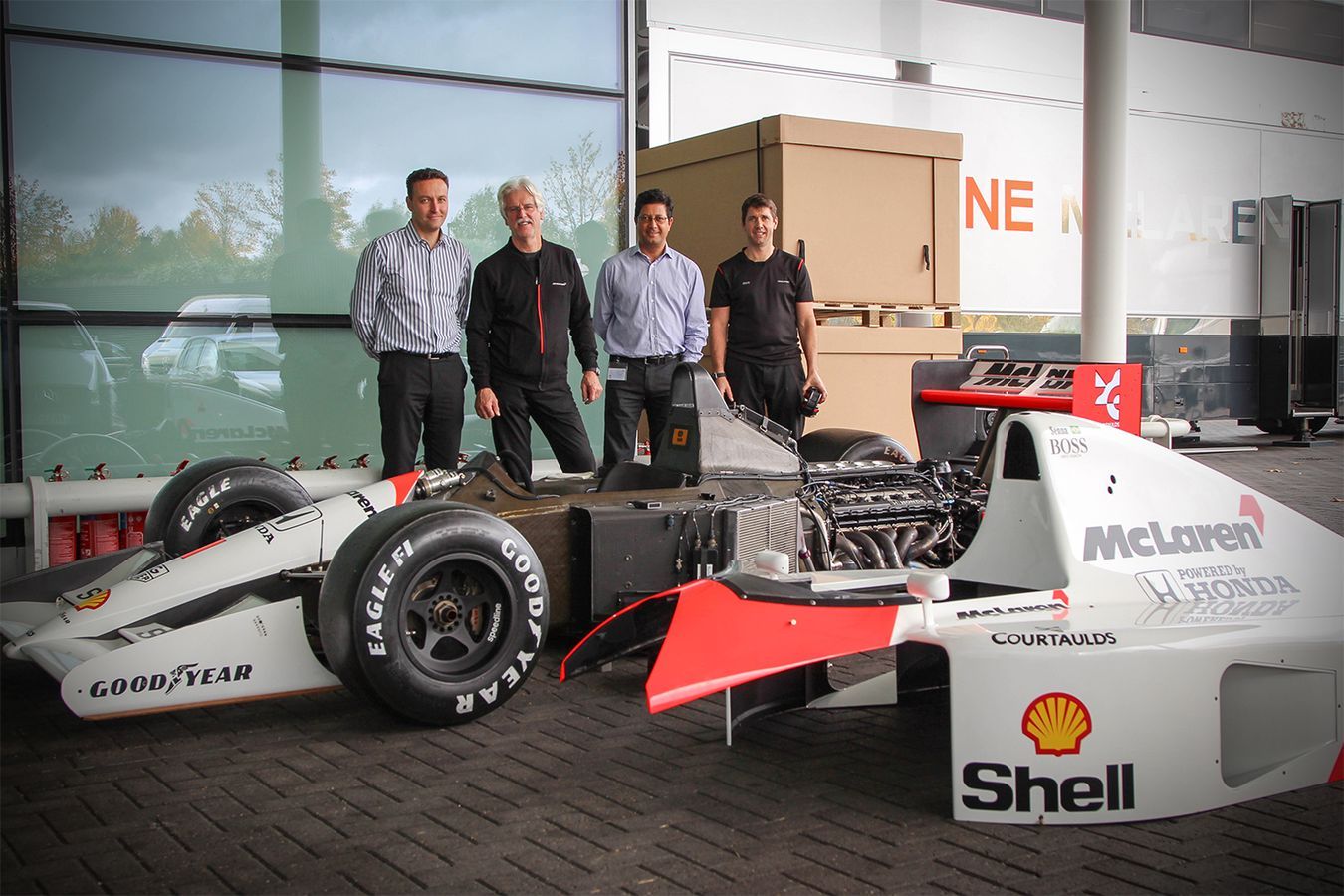
Heritage has always been a strong selling point for Formula One – but is the demand to see classic cars constant?
Actually, for us the demand is growing and this is largely driven by the expansion of the McLaren Automotive dealership chain. Each time a dealership opens, we will promote the brand by putting a heritage car on display. We’re busier than ever – but the more cars we have out, the happier we are!
